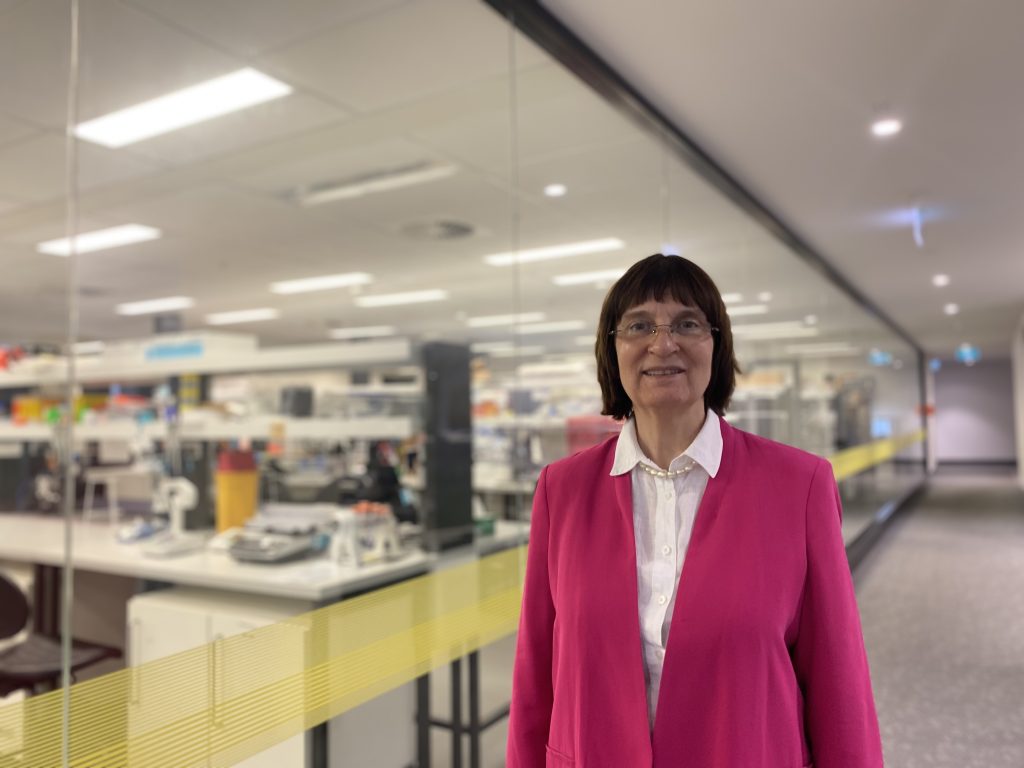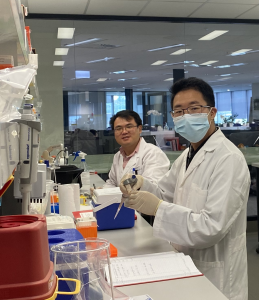A team of biomedical engineers have developed genetic tests for low-cost precision diagnosis that can be done at home.
All Australians can relate to waiting in long queues during the COVID-19 pandemic for a swab test, anxiously awaiting the results while isolating at home, sometimes for days on end.
Polymerase chain reaction (PCR), a laboratory nucleic acid amplification technique, has been the only reliable way to detect genetic material for diagnosing infectious diseases such as COVID-19 over the last 40 years.
But the need for lab testing by trained personnel is not only expensive, it pushes out diagnosis timelines – not ideal during a rapidly evolving pandemic – said biomedical engineer Professor Ewa Goldys from the University of New South Wales.’
“A lot of amazing technologies have been developed through analytical chemistry,” she said. “But not all are useful for end users.”

Improving diagnostics requires appropriately simple technologies that lend themselves to inexpensive solutions, which we saw play out during the pandemic when Rapid Antigen Tests (RATs) became the diagnostic tool of choice.
“When RAT tests became available, the patient queues disappeared, the costs went down and the test strips became accessible and available to everybody,” she said.
While compatibility with end users can be transformative, ensuring precision and accuracy presents a complex research challenge, with issues such as insufficient sensitivity continuing to plague RAT testing.
“If a person has just fallen sick, they normally wouldn’t show up as positive on a RAT test,” Goldys added.
To address these issues, Goldys and a team of UNSW biomedical engineers used biosensing technology to develop gene-testing strips that can detect the same amount of genetic material as PCR tests with only one copy of a gene per microliter.
Unlike with PCR, the tests can be conducted at room temperature for “less than a few dollars per test”. According to recent research published by the team, the potential applications for the technology are endless.
Developing a pocket-sized lab
To ensure the biosensing test strips matched PCR standards, the team initially developed DNA nano-circles containing a short sequence of the target DNA to test samples of the COVID-19 virus and helicobacter bacteria that cause stomach ulcers.
Measuring only 2 nanometres in size, the nano-circles were much too small to be seen under a microscope.
But mixing the DNA nano-circles and the tested sample with CRISPR/Cas proteins allowed the team to cut DNA of the nano-circles when activated by DNA from the targeted pathogen – producing a molecular chain reaction.
“The interaction of a suitably programmed CRISPR/Cas protein with the gene target we are trying to detect causes the DNA nano-circles to break up, linearise and become ‘fake targets’,” said co-author Dr Yi Li.
“We unleash a huge cascade of fake targets which is easy to detect with the testing strips, even if only a few molecules of the original gene target are present.”
The gene-testing technology will function much like a RAT test, complete with test strips in a plastic test cartridge, swab and extraction tube.
“You put the swab into this test tube, shake it a few times, then deposit a drop into a receptacle – which is where the magic happens,” Goldys added.
Revolutionising diagnostics
From a consumer perspective the gene-testing strips will allow for rapid, inexpensive, precise diagnosis of infectious diseases such as COVID-19 and influenza, with the ability to distinguish between different pathogens, bacteria and viruses.
This includes detecting emerging pathogens such as fungi – a growing threat to human health globally.
Along with the technology’s potential to supersede PCR tests, another advantage of detecting DNA is possible use in cancer treatment monitoring.
“The technology has been tested for gene detection in advanced cancer patients,” Goldys said. “Maybe in the future when we achieve even better sensitivity, there will be a possibility of early cancer diagnostics.”
From a public health perspective, the technology could also be used to detect antimicrobial resistance.
“DNA is divided into smaller sections (or genes) that perform specific functions,” Goldys said.

“Antibiotic resistance is related to the presence of a particular gene. And that particular piece of DNA, like other pieces of DNA in microbes, has the tendency to spread, with microbes swapping genes between one another.”
Because the test strips can detect short nucleic acid sequences (20 nucleotides), horizontal gene transfer of antibiotic resistance genes can be identified.
For example, to determine if a patient is infected with multi-resistant tuberculosis, which can be life-threatening when inappropriately managed, a simple drop of sputum or blood into the device receptacle is all that would be required.
“We think we created a new benchmark in biosensing – our gene-based tests will be able to be performed anywhere, any time, by virtually anyone,” said study author Dr Fei Deng.
Environmental applications
Beyond healthcare, the gene-testing technology has multiple potential applications, including environmental diagnostics and biosecurity.
“Gene testing is universally applicable,” Goldys said. “With the end-user test, it’s possible to detect things such as endangered species, and more importantly, invasive species, including marine species that represent significant pests.”
For example, if scientists want to identify the presence of carp in waterways – a widespread “pest fish” responsible for environmental degradation and ecological impacts on native species in many Australian rivers such as the Murray–Darling Basin – they will be able to easily do so in remote areas without needing to access a laboratory.
“Carp are constantly releasing pieces of genetic material everywhere,” Goldys said. “DNA is a very robust molecule. The moment DNA from an organism is released, it spends a significant amount of time in the environment, allowing us to use the gene-testing strips to detect it.”
Next steps
The industrial and clinical rollout of our technology to the Australian market has already begun, Goldys said, with the goal of maintaining manufacturing onshore.
Beyond intellectual property protection, next steps to commercialise the technology include ensuring the technology is robust.
“It’s not enough to demonstrate things in a scientific laboratory. There are a lot of conditions to meet, to ensure reagents can be shipped, sold and survive – preferably without cold chain,” she said.
“We also need to be able to scale up production, develop inexpensive methodologies of production, identify end users and secure regulatory approval for medical applications for use in specific health conditions such as cancer with the Therapeutic Goods Administration and Food and Drug Authority.”
If all goes to plan, there will be no more queuing for PCR tests during the next pandemic.



